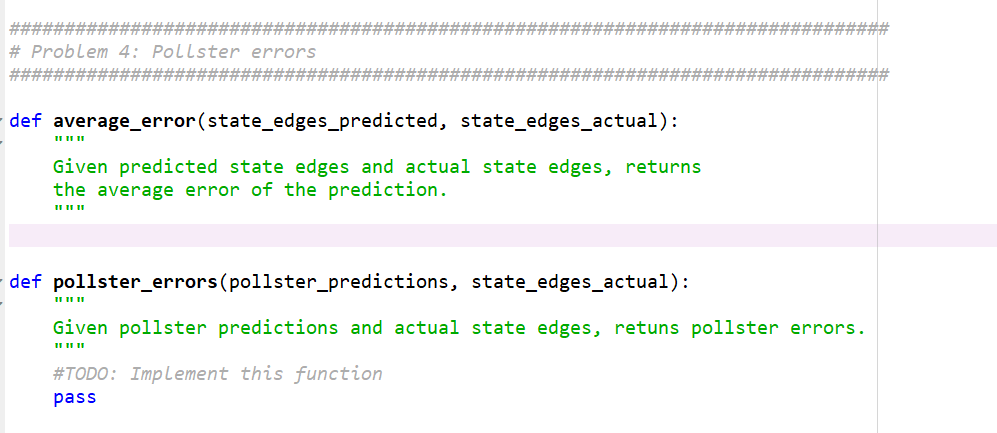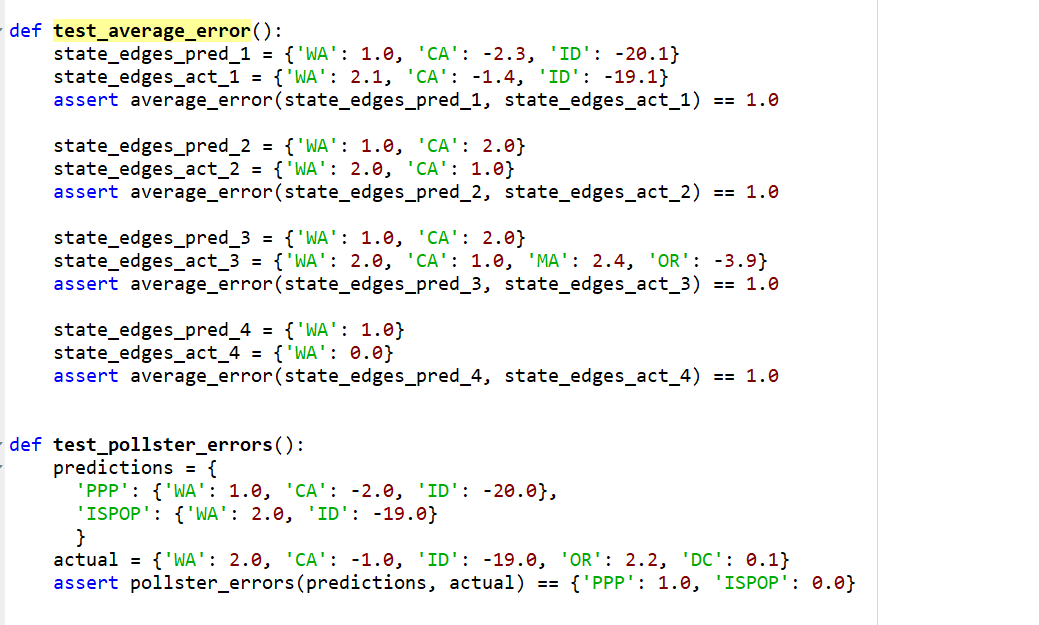Question
Problem 4: Pollster errors Now that we can represent election results and polling data in Python, we can begin to implement Nate Silver's algorithm. A
Problem 4: Pollster errors Now that we can represent election results and polling data in Python, we can begin to implement Nate Silver's algorithm. A first step is to write a function that computes the rank (average error) of a pollster's predictions. Implement the function average_error, which computes the average error of pollster edges. In each state, the error of a predicted edge is the absolute value of the difference between the predicted edge and actual edge. The average error of a collection of pollster edges is the average of these individual errors. Hint: Not all pollsters conduct polls in every state. When computing an average error, be sure to divide by the number of states in which a pollster made a prediction, not by the total number of states. Next, use average_error to implement the function pollster_errors. Again, refer to the data type reference below for more information about parameter and return types. Once completed, pollster_errors provides a quantitative method for measuring the accuracy of a pollster, based on their past predictions.
- Python
- Following the following functions:

For the following test values:

Step by Step Solution
There are 3 Steps involved in it
Step: 1

Get Instant Access to Expert-Tailored Solutions
See step-by-step solutions with expert insights and AI powered tools for academic success
Step: 2

Step: 3

Ace Your Homework with AI
Get the answers you need in no time with our AI-driven, step-by-step assistance
Get Started


